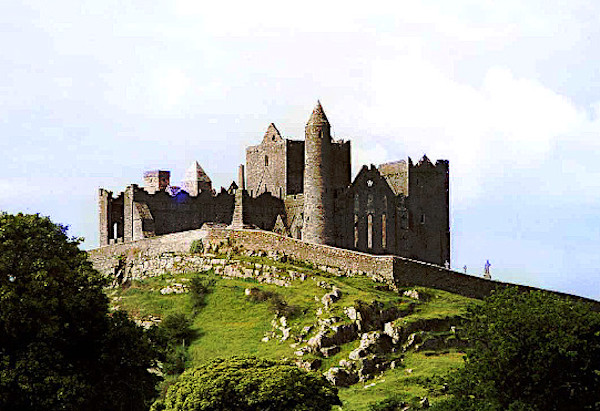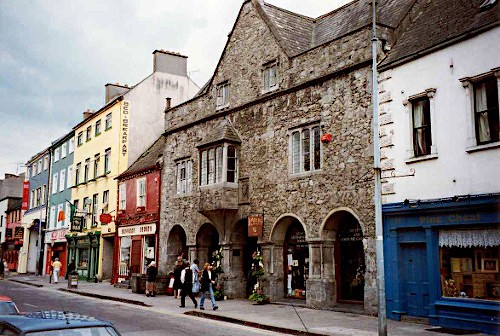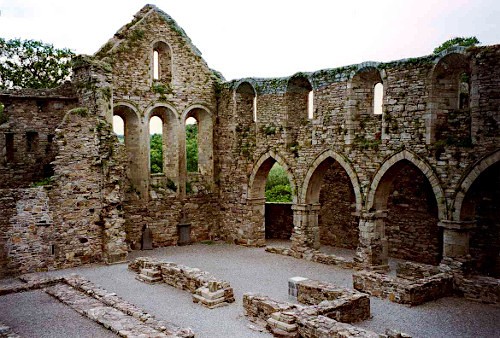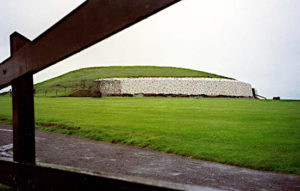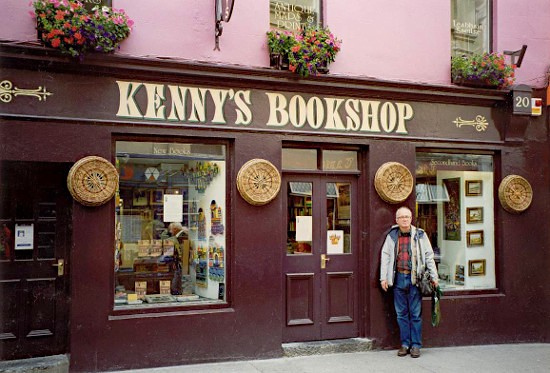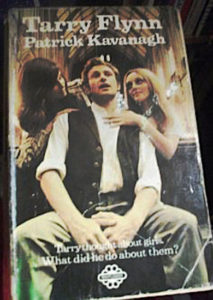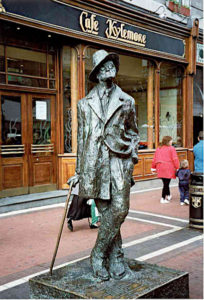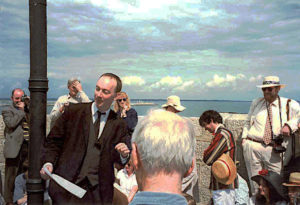Among all our numerous travels from Lyon I have picked the ones that were truly outstanding, thus leaving a lot of our travels aside. However, a couple of really memorable vacations should not be overlooked in these sketches.
Ireland in 1997
We drove from Shannon airport via Cashel, where we spent our first night in Ireland. The hostess was a very friendly lady who greeted us with “Hello, I am Maggie.” And then the traditional “What do you want for breakfast” She turned to John and said “And yourself?”. We went on to Kilkenny, towards the east and we also made a brief visit to Jerpoint Abbey, a ruined Cistercian abbey, a few miles to the south of Kilkenny. It was built in 1180.
We arrived in Dublin on June 15, and, after a few unforgettable days there. we continued north to visit historical and prehistorical sites, some of them being connected with John’s potential ancestors. Everything is very much up in the air about “French John” and who jumped ship somewhere on the east coast of “America” and started a line of O’Nealls or O’Neills. The spelling varies back and forth over the generations. John had augmented his dad’s genealogy and posted it online and he got quite hooked himself..
Newgrange passage tombs, 5000 years old, during the Neolithic period, were fascinating to see, even in steadily pouring rain. It was the insides of the tombs that were the most interesting part of those tombs — the incredible winter solstice device that lets the sun in exactly at one specific angle that indicated what time of the year it was. Some kinds of science are not as recent as we sometimes take for granted. 1 As for John’s possible ancestors, the one main thing we did because of his genealogy work was visiting Shane’s Castle at the north end of Louch Neagh in Northern Ireland. It was constructed in 1345 by an O’Neill dynasty (spelling of the name is of no importance). It seems quite unlikely though that the Irish kings who lived at Shane’s Castle were ancestors of the John and Albert E O’Neall line of O’Nealls. That one O’Neall (O’Neill or O’Neil, etc.) was one of many small kings in Ireland seems clear though, or at least high nobility.
As we parked our rented car outside of the property we saw a sign saying “No trespassing — Private property”. This was to be expected since, close to the old castle now in ruins, was the impressive château of the new owner of the land. We plodded on in spite of the sign and met with no men telling us we were intruding on private land. The grounds still gave an idea of the greatness of the old castle, a row of cannons pointing out to the lake from where invaders could be expected. And the two huge towers that seem to once having been connected give it an air of a fortress that it certainly had once been. We spent a night in Portrush on the northern coast. We were horrified by the huge fundamentalist religious posters telling you how to be saved in many various ways. As John says, it was a dull, drab and somewhat menacing place. How can the two parts of Ireland ever get back together when such rabid fundamentalism exists on the part of the Protestants? The Catholics in the Irish Republic can also be a fierce lot, especially the IRA (the Irish Republican Army). After a long and fascinating tour of Northern Ireland, we turned southwards to Galway, a charming little town on the west coast, where we spent two or three days — one day visiting the Cliffs of Moher and the Burren, a fairly long tour to the south of Galway. John had a dinner on oysters and Guinness beer, and as we walked around the town, we made it to Kenny’s bookshop, where John of course found something to buy and take Galway is close to Shannon where we caught the plane back home. We lucked out there with a pub in a little town close to Shannon where we had dinner that evening. While waiting for a band and singers, who just arrived as we were leaving, we enjoyed a wonderful couple of hours of Irish sometimes lewd songs, but heartily Irish, sung by one man, clearly a regular, who was leaning on the bar in between songs and glasses of beer. This was Irish Gemüt, better than we had found in any other town or city.
Galway will always make me think of the first time I read the name of this little town. It was while reading the most gripping short story ever written — well, in my opinion– James Joyce’s “The Dead” in his short story collection “Dubliners”. It was made into a wonderful movie by John Huston (his last movie), his daughter Anjelica Huston playing the young woman who remembers a young man who loved her and who died for her. This is how she tells Gabriel, her husband, about it, standing by the window in their hotel room, after the big evening at Gabriel’s aunts’ house. “…And the snow fell softly on all the living and the dead”. Still to me, reading it as I see it, surpasses watching the movie. Ireland is not just religious hostilities and potato famine. It is above all music, wonderful friendliness and Gemütlichkei — and there is James Joyce. “Ulysses” is a mesmerizing novel about the meanderings of Leopold Bloom on the day of April 16 and his sensuous but not very faithful wife Moly, a soprano who performs in public on and off. She has the final soliloquy that surpasses all other sensuous writings.
Dublin
Now back to Dublin, which was the really high point in Ireland — for at least two major reasons.One big surprise was the Abbey Theatre and Patrick Kavanaugh’s play, Tarry Flynn — or, more precisely, a play based on a novel, Tarry Flynn, by Kavanaugh. We went to an agency to find out what was on in Dublin and we hit on this great play. We spent a most memorable evening at the Abbey Theatre — even though the smoke in the lobby during the intermission made the air just about unbreathable.
The lady at the theater agency taught us how to pronounce the name Kavanaugh, which was not altogether news to us. The final ‘gh’ is not pronounced, which is the case with lots of Irish names. But I liked to hear the Irish woman pronounce it so very beautifully. This most famous of Kavanaugh’s plays was wonderfully directed, and it was funny and fascinating. Tarry Flynn, a young man who grew up on a farm, now wants to leave the life of his ancestors and make a new living for himself. The play was later going to open on the Haymarkett in London, where it also became a great success. We really lucked in with that play and we had a wonderful evening at Dublin’s famous theater
______________
But the really superb surprise was Bloomsday. It was almost unbelievable. We did not even know that it was Bloomsday on our first day in Dublin. This is the day, June 16 1904, when Leopold Bloom in Joyce’s novel “Ulysses” wanders through Dublin. The novel was first published in 1922. This is what happened on our first day in Dublin. As we were getting on the metro in the northern outskirts of Dublin where our B&B was, the man who sold us our tickets told us that it was Bloomsday and that we should definitely go straight to the Martello Tower south of Dublin and enjoy the Bloomsday festivities. We still didn’t have a notion about what it was going to be like at all. We did know about Bloomsday though, even though we didn’t know it was on June 16. Pure luck. What a wonderful coincidence it was getting to spend our first day in Dublin on Bloomsday.
We got off the metro as close as possible to get to the Martello Tower and right away we saw people dressed in Edwardian outfits This was 1997, and the novel “Ulysses” takes place in the very early 19-hundreds. . Not everybody was dressed up though, and we didn’t stick out at the top of the tower where the first chapter in Ulysses takes place before we even get to meet Leopold Bloom, or Poldy as Molly calls him.
At first anybody who felt like it got up and read an excerpt from the book. Then an actor arrived who had been booked for that morning to read an excerpt or two from the book with gestures and all. It was spellbinding. After that, during our few days in Dublin we in a way followed Bloom’s wanderings through Dublin, Eccles Street, Grafton Street and even Sandyhurst Strand, We passed in front of the house where Leopold Bloom and Molly lived in a row house at 7 Eccles Street, and we walked from there to the James Joyce Centre. A man was sitting in the library who was most certainly a descendant of Joyce. The front door from 7 Eccles Street has been installed inside the ‘Centre‘. There were lots of translations of Ulysses into various other languages, and I got out the translation in Swedish to compare the feeling that came across. I had not read all of the book yet, but I had read the beginning, and it was clear to me that a book like Joyce’s masterpiece can not really stand being translated. We went to Sandyhurst Strand where Episode 13 takes place. I remembered this piece of coast well when, later on, John and I were to read our two copies of the book in parallel.
We bought an updated version of Ulysses in Dublin, which I read, and John read the book we already had. And, of course, I started all over again from the opening chapter where Buck Mulligan and Stephen Dedalus are at the top of the Martello tower, which Buck rents. Mulligan is emerging from the debts of the tower carrying a bowl of soapy water, shaving gear and a mirror and wearing an old, saffron-colored robe. Stephen is the major character in the first three chapters and in the final chapters there is interaction between Stephen, Molly and Leopold Bloom. Along with the novel itself I read Blamires’ guide to Ulysses 2, which I found well worth reading in itself. The book came alive to me this time, which had not at all been the case on my first attempt at reading it. I wandered through Dublin with Leopold Bloom and Steven. And I was so very pleased that we had even been at Sandyhurst Strand, so I could picture Bloom in this sad-funny episode. While I was reading the book, I was actually living in it — a wonderful experience. It was not light reading, first the guide and then the chapter by Joyce, but it was all worth it. What a wonderful life I had lived when I finished the book.
In the last chapter, Molly’s soliloquy — Episode 18 –where she says “Yes” stands out as the grand finale of the novel and a landmark in modern literature Molly’s mind travels over innumerable incidents in her life, important ones and just lightheaded thoughts. After identifying with Leopold Bloom and his humiliation in so many episodes, this is the final redeeming event — at least partly redeeming, since the soliloquy slides over a multitude of extremely varying thoughts and incidents. Nevertheless, Leopold Bloom, Poldy, appears as the lover who made Molly decide to marry him. Molly is reliving various sensuous events in her life, and her thoughts also wander off to various people, their doings and their looks. There is the lover she gives herself to by the sea in Howth and who is clearly Bloom. Howth is just north of Dublin, where we also went strolling one afternoon. A moment later Molly is going back to her seduction by a young man in Gibraltar, where she lived with her father in her early youth. Molly is reliving an extraordinarily sensuous episode with Leopold — Poldy as she calls him. Molly is the epitome of sensuality, and in her mind she touches lightly on several lovers, episodes that had stayed with her, sometimes grossly vulgar and very funny. At the end of the last page though, I found myself breathless by Molly’s rambling and sensuous soliloquy and her final “Yes” and “yes”. Continued: Chapter 37 (Part 2) — Lapland Revisited
- Newgrange Winter Solstice. On the days around the Winter Solstice when the skies are clear the rising sun illuminates the passage and chamber of the 5000 year old megalithic passage tomb at Newgrange in the Boyne Valley. Above the entrance to the passage of the mound there is an opening called a roof-box. On mornings around the winter solstice a beam of light penetrates the roof-box and travels up the 19 metre (63 ft) passage and into the chamber. As the sun rises higher, the beam widens so that the whole chamber is dramatically illuminated. ↩
- The New Bloomsday Book: A Guide Through Ulysses by Harry Blamires ↩


